
Tailless whip scorpion (Amblypygid). Peruvian Amazon. About 8”/20cm from toe to toe a giant
Tailless whip scorpion, (order Amblypygi, sometimes Phrynichida), any of 70 species of the arthropod class Arachnida that are similar in appearance to whip scorpions (order Uropygi) but lack a telson, or tail. They occur in hot parts of both North and South America, Asia, and Africa, where, by day,
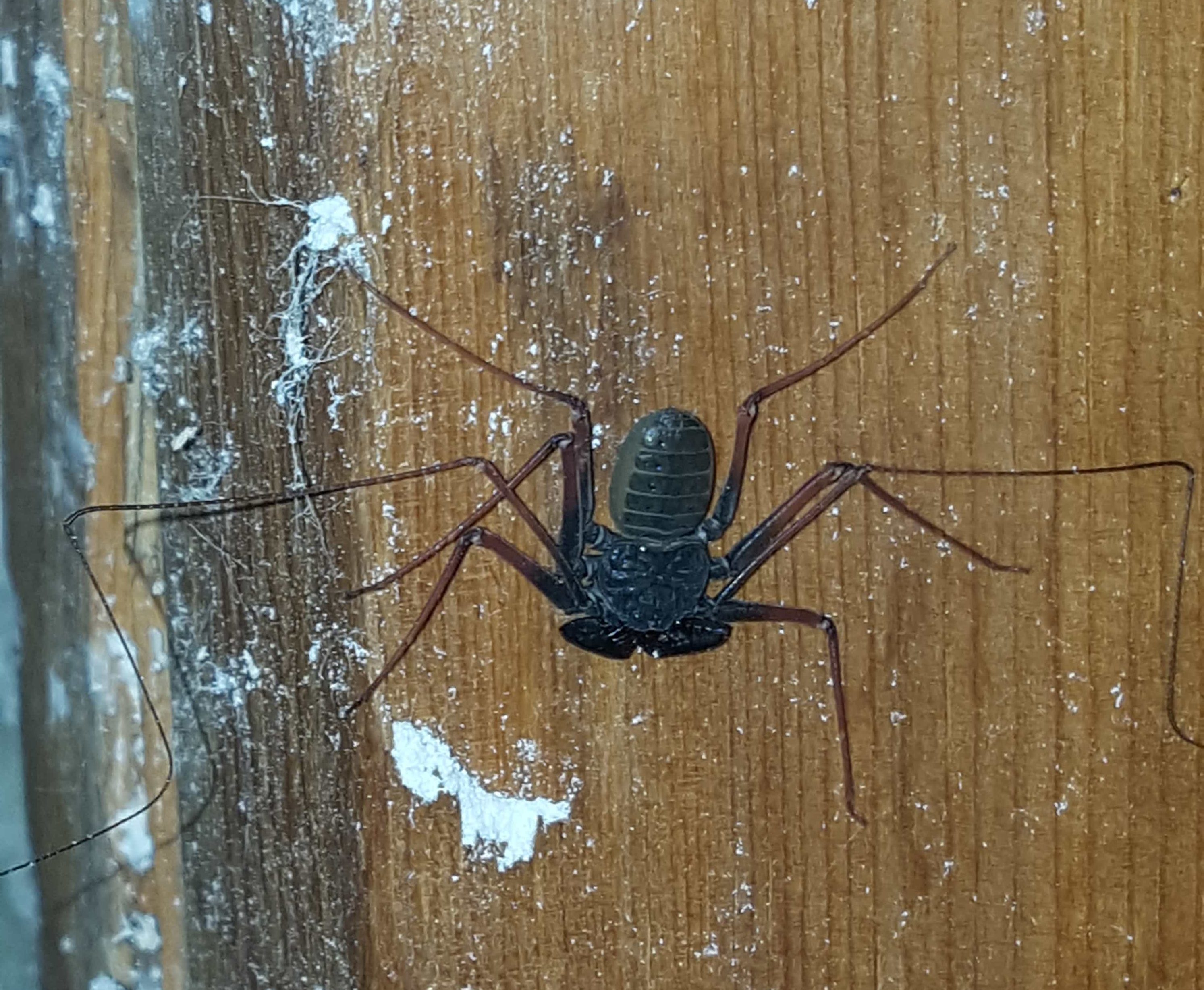
Amblypygi (Tailless Whip Scorpions) in Phoenix, Arizona United States
The tailless whip scorpion looks like a cross between a spider, a scorpion, and a crab. It has a broad, flat body with a segmented abdomen and a series of flexible appendages that sweep the ground as it moves. Eight legs and two pincers jut out from both sides of the body and bend in a loose L-shape.

Tailless whip scorpion (Charon sp.) DSC04011 Arthropods, Charon, Arachnids
Amblypygi are a nocturnal group of arachnids, commonly called whip spiders or tailless whip scorpions (not to be confused with spiders in the order Araneae or whip scorpions, also called vinegaroons, that belong to the related order Thelyphonida).

Amblypygids are also known as whip spiders and tailless whip scorpions (not to be confused with
Amblypygid Tailless whip-scorpions live in caves, crevices and under large boulders at most elevations. Since they are nocturnal they are seldom encountered by humans. Where to look for this animal in the EYNF At night in rocky, boulder-strewn areas and caves, adjacent to nature trails.
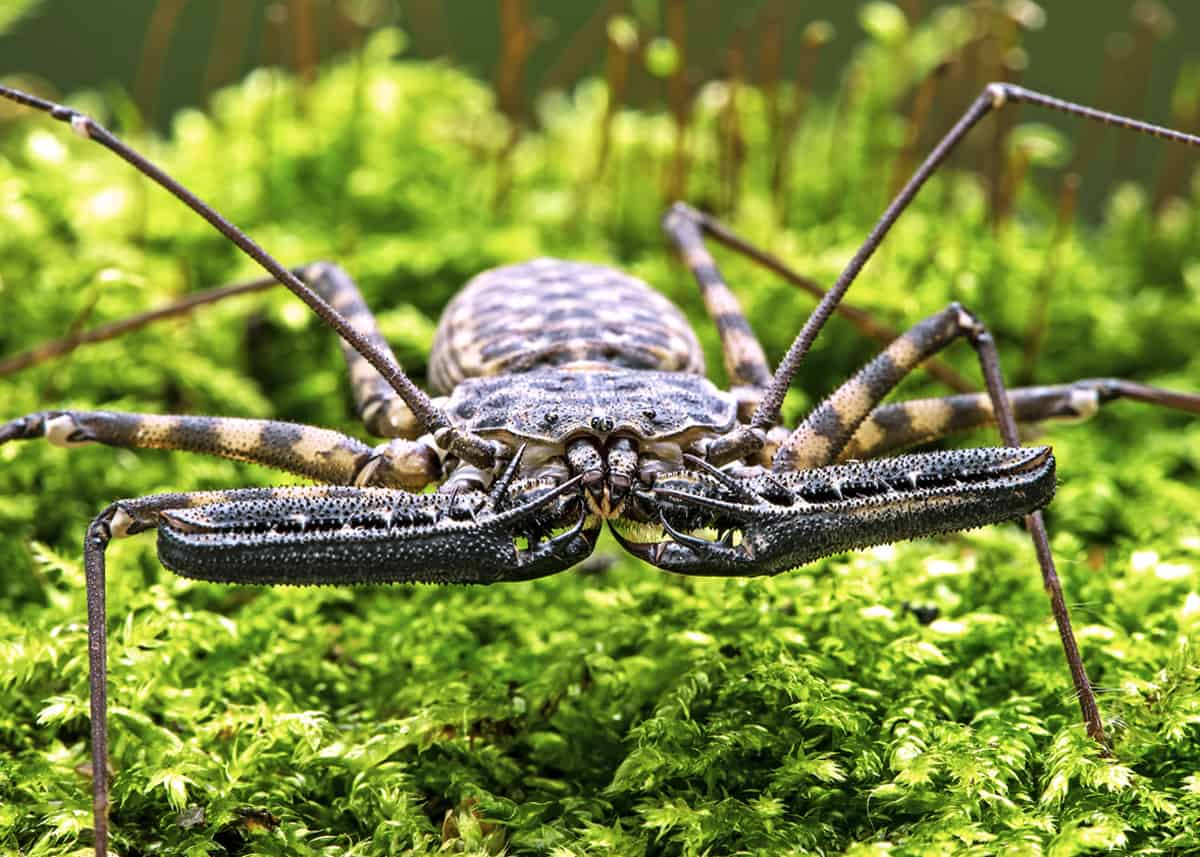
30 Tailless Whip Scorpion Facts (Harmlessly Terrifying!) Everywhere Wild
Is it a spider or a tailless scorpion? Learn about whip spider care and habitat, and find out how to treat a whip spider bite. Updated: 11/21/2023 Table of Contents Whip Spider or.
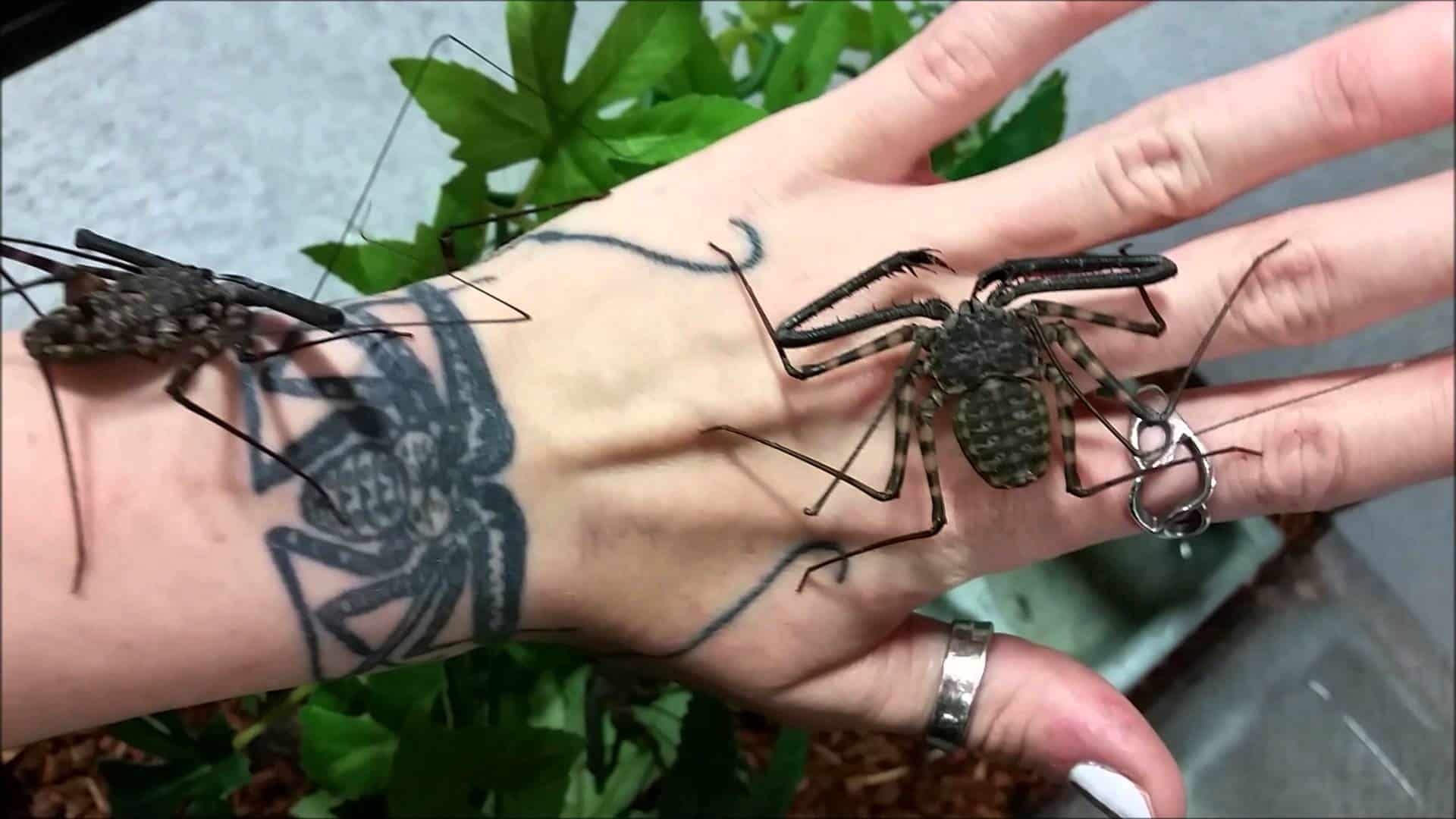
This Crazy Looking Arachnid Is Known As The 'Whip Scorpion' •
Heterophrynus. Pocock, 1894. Type species. Heterophrynus cheiracanthus. (Gervais, 1842) Heterophrynus is a genus of whip spiders, also known as tailless whip scorpions ( order Amblypygi ), of the family Phrynidae, in the monotypic subfamily Heterophryninae.
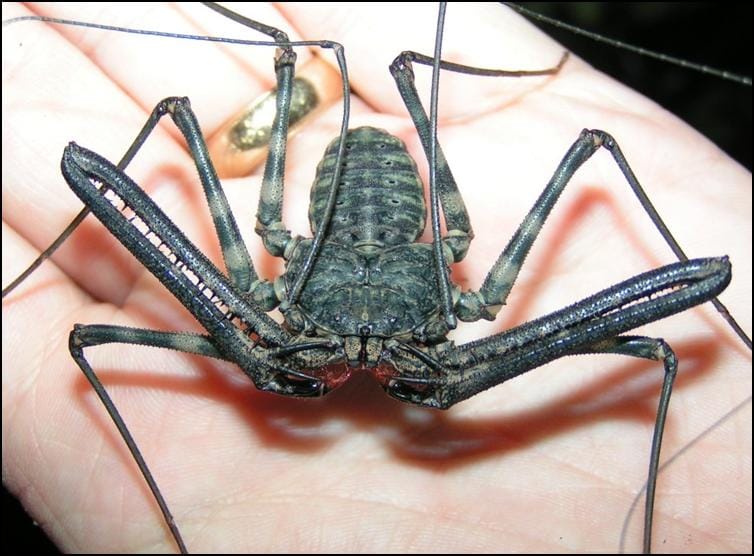
Tailless Whip Scorpion Jonathan's Jungle Roadshow
Tailless whip scorpion scientific name. The tailless whip scorpion belongs to the order Amblypygi in the phylum Arthropoda. They are referred to as Amblypygids. There are five families in this order and around 155 species. Also referred to as whip spiders or cave spiders, these creatures are unique and are neither spiders nor scorpion. Of the various species, the two most common species found.

Tailless Whip Scorpion molting Scary animals, Weird insects, Weird animals
Paraphrynus is a genus of whip spiders, also known as tailless whip scorpions (order Amblypygi), of the family Phrynidae. It is distributed from the southwestern United States to Central America, including several Caribbean islands. Most species are endemic to Mexico. Taxonomy A female P. pococki showing palpal spines.

whip scorpion Google Search Weird insects, Bugs and insects, Arthropods
The tailless whip scorpion (also known as a whip spider) is a group of arachnids under the order Amblypygi, with over 150 known species. These nocturnal invertebrates can be found all over the world, and generally prefer a vertically-oriented habitat. The most common species in the pet trade include: Charinus pescotti Damon diadema Damon medius

White Tailless Whip Scorpion (Heterophrynus batesii), Ecuador Arachnid of the Order Amblypygi
The tailless whip scorpion is a remarkable arachnid species that belongs to the order Amblypygi. These nocturnal invertebrates exhibit fascinating behavior during their life cycle. Unlike typical scorpions, these arachnids have no venomous stinger and are harmless to humans, yet their unique appearance and impressive hunting techniques make them an interesting subject for study.

Tanzanian giant tailless whip scorpion Insects, Arachnids, Spider
Amblypygi is an order of arachnid chelicerate arthropods also known as whip spiders or tailless whip scorpions, not to be confused with whip scorpions or vinegaroons that belong to the related order Thelyphonida. The name "amblypygid" means "blunt tail", a reference to a lack of the flagellum that is otherwise seen in whip scorpions.
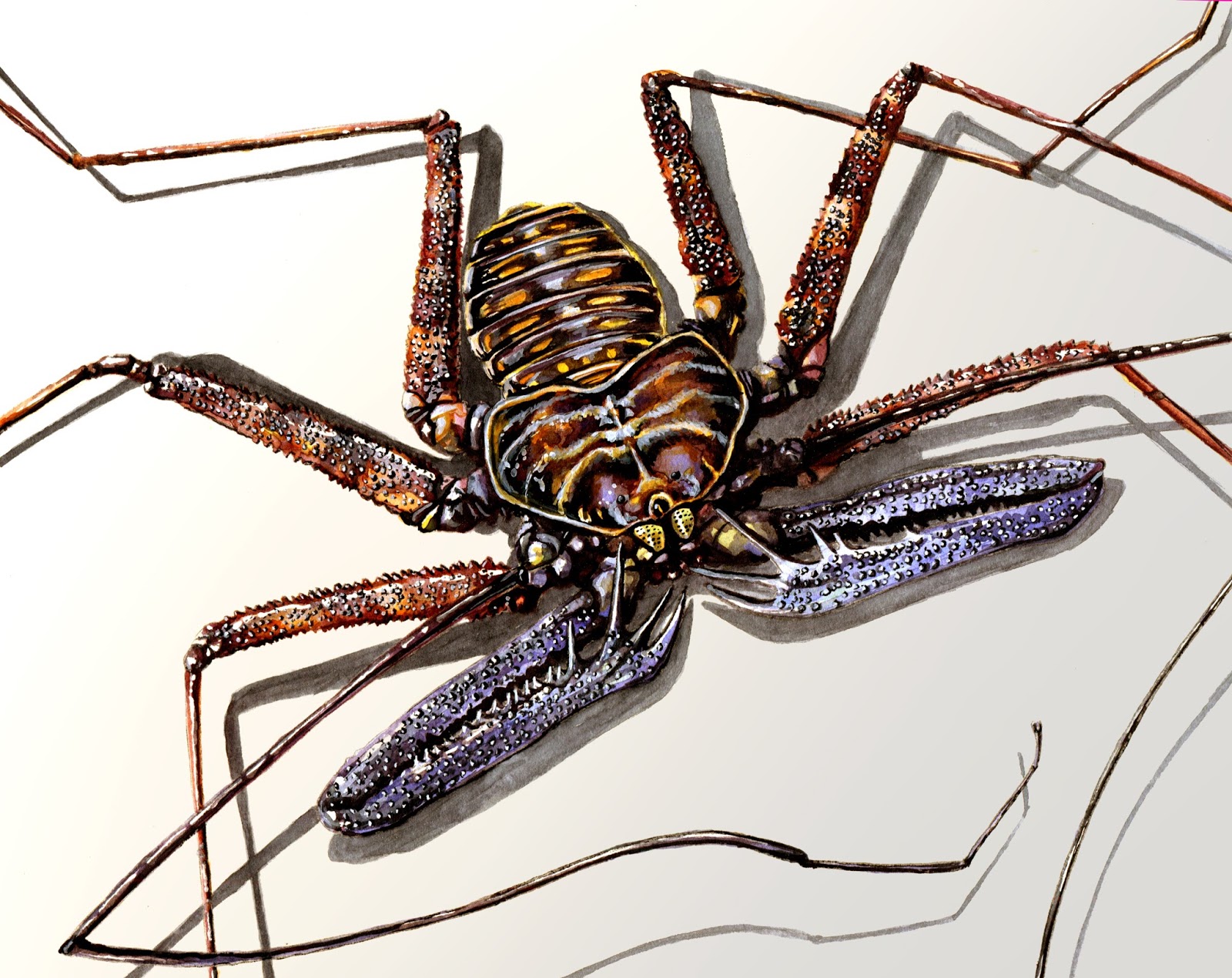
Tailless Whip Scorpion
Tailless Whip Scorpion Scientific Classification Kingdom Animalia Phylum Arthropoda Class Arachnida Order Amblypygi Read our Complete Guide to Classification of Animals. Tailless Whip Scorpion Conservation Status Least Concern Vulnerable Tailless Whip Scorpion Locations Africa Asia North-America South-America Tailless Whip Scorpion Facts Prey
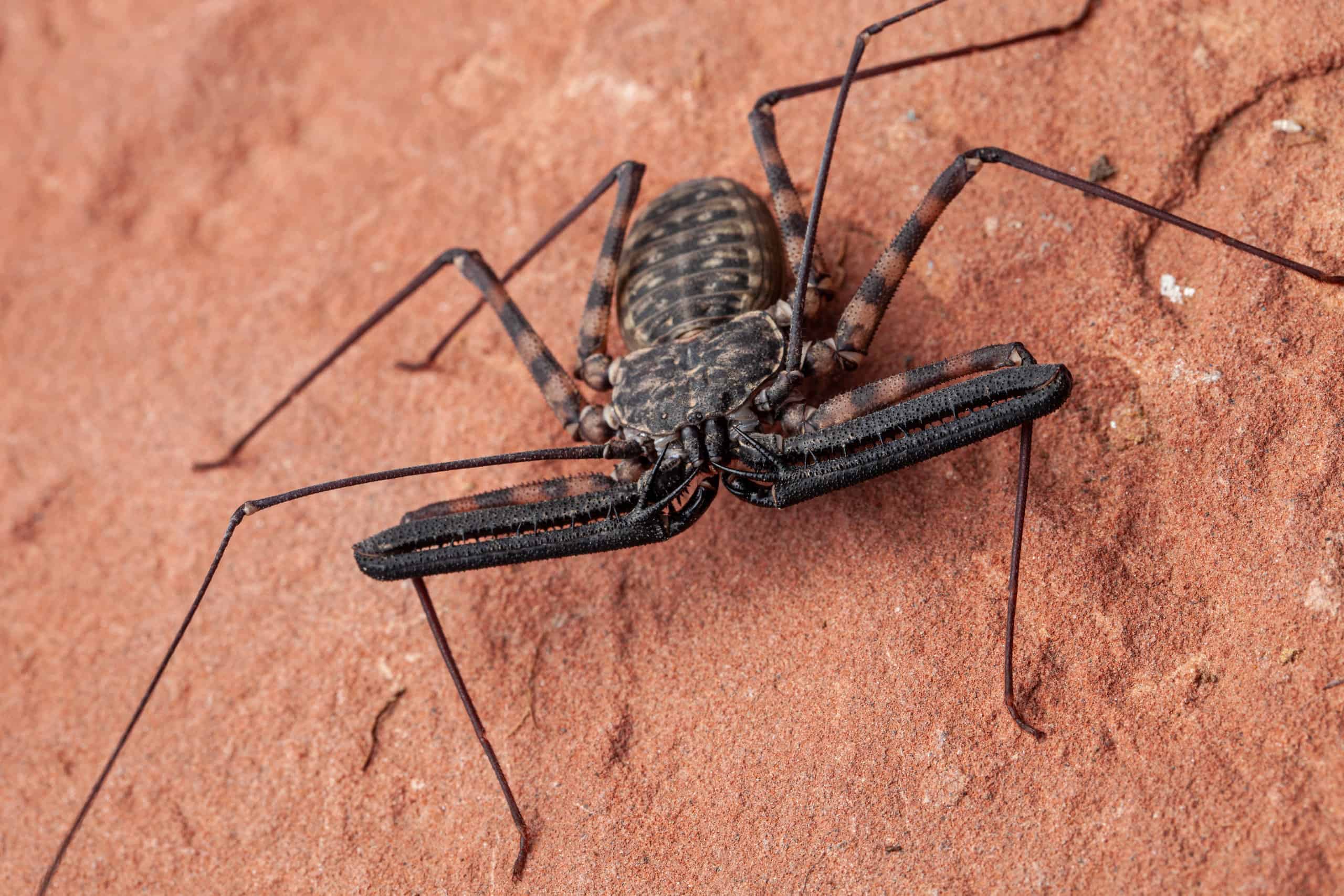
Tailless Whip Scorpion Animal Facts AZ Animals
The tailless whip scorpion, aka the whip spider, looks a little like a cornucopia of different types of arachnids. With long, skinny legs they look like a spider, but nope. It's not a spider. Its first pair of legs end in antennae that are used to help it see and locate prey, as they can't see too well; even though they have multiple eyes.

Tailless whip scorpion Nocturnal, CaveDwelling, Venomous Britannica
Amblypygid Tailless whip-scorpions live in caves, crevices and under large boulders at most elevations. Since they are nocturnal they are seldom encountered by humans. Where to look for this animal in the EYNF At night in rocky, boulder-strewn areas and caves, adjacent to nature trails.

Real Monstrosities Tailless Whip Scorpion
Tailless Whip Scorpion Habitat. In the wild, Tailless Whip Scorpions, or Amblypygi, are found in tropical and subtropical regions across the globe. They prefer humid environments such as caves, underneath bark, rocks, or within leaf litter. These creatures are nocturnal, hiding during the day and coming out at night to hunt for prey.

Pin by Fabiola Maria on Insectos Weird insects, Spider, Bugs and insects
Tailless whipscorpions are reclusive predators of insects. They hunt nocturnally, using their long, delicate first pair of legs to find their food. The spined pedipalps impale and crush the prey and then transfer it to the chelicerae (jaws). Tailless whip-scorpions can only pinch their prey; they lack venom glands. Life History
